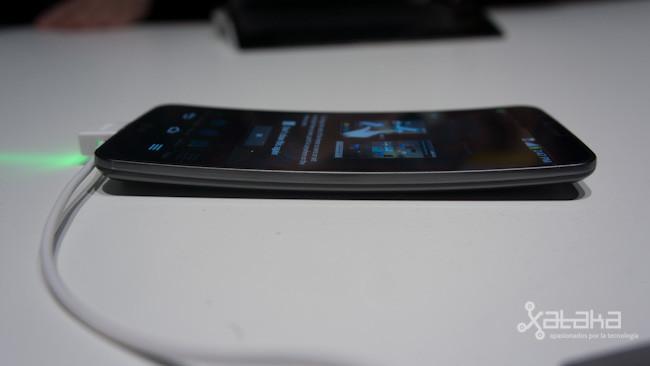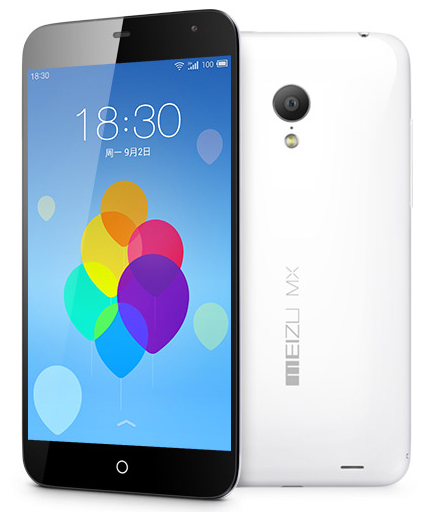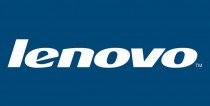Observatorio tecnológico del 20 al 26 de enero

It started out more like a pilot test, just another battle in the struggle for supremacy between Korean corporations LG and Samsung. After all, flexible displays are still in their infancy. So no one ever imagined that the Samsung Galaxy Round and LG G Flex would leave their native country, where they're currently on the market at the type of price you would expect for a new technology. But now LG has announced the release of its curved screen in Europe as well, and what's more, in the very near future. The LG G Flex will be available late February or early March in the main European markets, with Germany, France, the UK, Sweden and Spain the first countries to receive it. This latest move looks like LG wants to cause a stir and prolong the good impression made by the LG G2, though despite excellent reviews for this terminal sales have been quite poor so far. The next Mobile World Congress could be the ideal platform to roll out this new device in our country, in pure Sony style with its latest star terminals, though it remains to be seen whether LG will seize the opportunity. For the moment LG is playing its cards close to its chest. The exact release date has yet to be announced, as has the price, but it certainly won't be low.
Microsoft is set to withdraw Windows XP from the market definitively on April 8 after a couple of extensions. The operating system that was known in the development phase as Whistler and was unveiled in 2001 is finally going to be laid to rest. However, a lot of infrastructures still use that Microsoft OS version, such as ATMs. Apparently, 95% of ATMs worldwide run on Windows XP. This last week has seen the launch of a patch to solve a critical security problem for Windows XP, and after April 8 no more updates or security patches will be released for XP. This will have a number of repercussions, including the potential exposure of Windows XP to future attacks by hackers. In fact, the scenario painted by the CEO of one of the companies that offers software solutions for ATMs in the United States—Aravinda Korala—is pretty bleak, as only 15% of US ATMs are expected to have migrated to Windows 7 by that date. And the picture is not that different elsewhere around the globe. Windows XP will continue to run in ATMs for at least a few months after Microsoft withdraws official support. As the Korala CEO says,
“The ATM world is not really ready, and that's not unusual. ATMs move more slowly than PCs."
The risks of continuing to run Windows XP in ATMs after Microsoft withdraws XP are very high and consequently there are plans in place to migrate the ATM software to another operating system, but this is unlikely to happen before the deadline. For example, JPMorgan has purchased the XP extended support to win time in carrying out its transition to a securer platform, Windows 7, due to start in July this year. The withdrawal of Windows XP is not only going to affect end consumers and corporations but everyday elements as well, like the automatic teller machines launched nearly 13 years ago that still use versions of Windows XP.

A month ago, one of the most popular Chinese Android smartphones, Meizu, announced its intention of targeting the US market, and it looks like that might be just the beginning. The company Meizu is poised to conquer Europe as well, as it will officially announce at MWC 2014, to be held in Barcelona at the end of February. One of the company's most sophisticated terminals is the Meizu MX3, which comes with a 5.1-inch full HD display and is powered by the Samsung Exynos 5410 octa-core processor. Meizu plans to enter the market by offering terminals equipped with high-end Samsung features but 30% cheaper. Meizu MX3 will reach Europe during the first quarter of 2014, followed later in the year by the new Meizu MX4, with a 5.5-inch 2560×1536 resolution display, taking it to above 500ppp.
Hollywood giant Paramount has just taken a historic step: it is reportedly going to phase out 35mm film in favor of nearly all digital formats. According to the experts, Paramount has been very brave in being the first to take this step but it will certainly not be the last. Other movie industry giants in the US are expected to follow suit in the very near future, abandoning a format that has been the pillar of filmmaking for more than a century. The news comes from an anonymous movie executive who was quoted about Paramount's ground-breaking decision in the Los Angeles Times when he revealed that Anchorman 2: The Legend Continues, released in the US last December, will be the last film distributed in the classic format of 35mm. The equipment at movie theaters across the United States was a key factor in reaching this decision. According to the National Association of Theater Owners, only 8% do not have projection systems able to work with digital formats. However, the migration to digital cinema projectors is not as widespread in movie theaters in Latin American countries and other foreign markets, which will continue receiving Paramount movies in 35mm film—at least for the moment. The shift to digital formats is a logical step for Hollywood production companies when you consider that digital movies are much cheaper to distribute: a digital copy costs around 100 dollars, compared with 2,000 dollars for a copy in traditional film. The digital fever has revolutionized the movie industry, with formats that managed to remain in vogue for decades gradually becoming obsolete in the avalanche of technical improvements offered by digital formats. The same thing happened in the audio world when CDs wiped out cassettes and vinyl records, though the latter have now acquired a vintage value, and of course traditional analog cameras have had to cede their ground to the powerful sensors that now come with every kind of digital camera, not to mention smartphones. Traditional photography still exists but forms a marginal part of the current market, with classic giants like Kodak managing to preserve that part of its business but only with great trials and tribulations. The movie industry had seemed to be faring a little better, but in the last few years the production companies have been helping ("forcing" might be a more accurate way of putting it) movie theaters to install digital projectors to offer all the advantages that these formats provide. All that was left was for the studios to join in as well, and now the step taken by Paramount looks set to lay the foundations for a massive migration to digital formats. This year is probably going to bring a lot more news in the same vein, so watch this space.
The market for entry-level smartphones is going to be very hot this year. Nokia's Lumia 520 proved there was an interesting niche out there and now Motorola has brought out its Moto G. What's more, in declarations to TrustedReviews the company has confirmed that it's going to be pursuing that strategy. CEO Dennis Woodside mentioned the possibility of offering the market a Motorola for 50 dollars, though gave no details about the terminal's specifications or when it might reach the shops. What he did make clear was that the company's intention to offer something different would be focused on introducing customization options, though unfortunately it looks like this will only affect the US market. For example, the Moto X we recently confirmed was going to be released in Spain will not have any customization options. Apart from the colors and finishes, it seems that customized screen size and functionalities have yet to be incorporated. The company's modular phone is therefore back in the fray, and judging from past experience we can expect quite a few surprises in 2014.

Lenovo is the world's leading PC manufacturer. The Chinese company reported excellent results in 2013, though revenues from personal computers continue their downward trend. Plummeting PC revenues were the principal reason behind Lenovo's decision to focus on tablets, smart TVs and smartphones. Now it plans to start selling servers to the hotel industry, which explains its recent acquisition for 2.3 billion dollars of part of IBM's server business. The company explained the details of the operation in a press release and in PC World. It hasn't acquired IBM's entire server business, just the x86 server hardware business and the maintenance service. IBM will keep its other ranges of servers. In 2012 it joined forces with EMC to sell servers in China, so it already has experience in the field. Now it will compete with Dell and Hewlett-Packard to sell this category of servers. While offering servers to the hotel industry is clearly much more complex than selling machines (solutions have to be offered, not just hardware), Lenovo is a key player and seems to have a very firm grasp of its business. Until now there were just three giants involved in the hotel industry (IBM, Dell and HP), but now Lenovo looks set to make its presence felt across the globe.

It seems that changes are afoot in the Spanish telecoms scene, at least if Vodafone's current negotiations to acquire Ono—the country's biggest cable group—and extend its catalog of fixed services are anything to go by. As reported in Expansión, the whole thing has come about because of Ono shareholders' impatience to see returns on their investments, and they have therefore come up with a dual process as the most profitable solution. On the one hand, the company's imminent flotation on the stock market could lead to a capital increase in the very near future, but at the same time they are leaving the door open to a direct sale (which is where the British multinational comes in). Quoting sources involved in the talks, the Spanish financial daily says Vodafone and the cable provider have strengthened their ties for several reasons. First and foremost is Vodafone's availability of funds following its departure from Verizon Wireless; next is the pressure to reach an agreement before Ono goes public, one of the risks being a takeover bid from the competition in the meantime. Another key factor is the deployment of a fiber-to-the-home network by Telefónica, which slowly but surely continues to forge ahead. At the moment it's hard to guess how the matter will be resolved (and, more importantly, what the implications will be for both firms' users), but there's no doubt whatsoever that the next few months are going to be quite turbulent.
